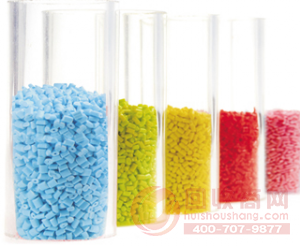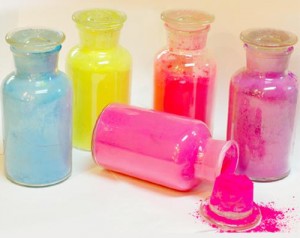There are many kinds of additives, there are about hundreds of kinds, and there are thousands of varieties. The selection and application of additives must take into account various factors such as the type of application, processing methods, product characteristics and compounding components. Taking the Additives for Polymers as an example, the following problems should be considered when selecting additives. 1. Compatibility of additives and products The auxiliaries should be matched to the polymer, which is the first consideration when selecting additives. The compatibility of the auxiliaries with the polymers includes their compatibility and their effect on stability. In general, auxiliaries must be present in the product in a long-term, stable and uniform manner in order to exert their performance. Therefore, it is usually required that the selected auxiliary agent has good compatibility with the polymer. If the compatibility is not good, the additives are easy to precipitate. The precipitation of solid additives is commonly referred to as "blooming", and the precipitation of liquid additives is called "exudation" or "sweating." After the precipitation of the auxiliary agent, it not only loses its effect, but also affects the appearance and feel of the product. The compatibility of the auxiliaries with the polymers depends primarily on their structural similarity. It is not required that all auxiliaries must have good compatibility with the polymer. Such as inorganic fillers and inorganic pigments, which are insoluble in the polymer, their dispersion in the polymer is heterogeneous and incompletely precipitated in terms of compatibility. For such additives, they are required to have small fineness and good dispersibility. Not all additives are as compatible as the polymer as possible. If the compatibility of the lubricant is too large, it will act as a plasticizer, causing softening of the polymer. Another important issue with the compatibility of additives with polymers is their effect on stability. The decomposition products of some polymers (such as polyvinyl chloride) are acidic (release of HCl), which may cause some additives to fail, such as salting with alkaline additives. Some additives also accelerate the degradation of the polymer. 2, the durability of the auxiliary The ability of a polymeric material to retain its original properties under conditions of use is called durability. Maintaining durability is to prevent the loss of additives. The loss of additives is mainly through three routes: volatilization, extraction and migration. The amount of volatility depends on the structure of the additive itself. In general, the smaller the molecular weight, the greater the volatility. The extractability is directly related to the solubility of the adjuvant in different media. The appropriate additive variety should be selected according to the environment in which the product is used. Mobility refers to the property of certain auxiliaries in a polymer that can be transferred to the material with which it is in contact. The migration size is related to the solubility of the auxiliaries in different polymers, and the auxiliaries should be resistant to water, oil and solvents. 3. Adaptability of additives to processing conditions Processing conditions The requirements for additives, the most important is heat resistance, that is, the additives are not decomposed, less volatile and sublimated at the processing temperature. No corrosion to processing equipment and molds. For the same polymer, the additives required may vary depending on the method of processing. 4. Adaptability of additives to product use The use of products often has certain restrictions on the choice of additives. Products of different uses have certain requirements on the appearance, odor, pollution, durability, electrical properties, thermal properties, weather resistance and toxicity of the additives to be used. For example, light-colored products cannot be easily contaminated with additives. In particular, the toxicity of auxiliaries has attracted widespread attention. Controversial toxic auxiliaries have limited its use in food and pharmaceutical packaging materials, water pipes, medical devices, toy plastics and rubber products, and textile products. Different health standards have been established. 5. Synergism and counteraction in the coordination of additives A polymer tends to use multiple auxiliaries simultaneously, and these auxiliaries are simultaneously present in one polymer system, affecting each other. Such as synergies, additive effects, antagonistic effects, etc. The additive effect means that when two or more additives are used in combination, their total effect is equal to the sum of their respective individual use efficiencies. Synergistic effect means that when two or more auxiliaries are used together, their total effect exceeds the sum of their respective individual use efficiencies. The counter effect is the opposite. It means that when two or more additives are used together, their total effect is less than the efficacy or addition of their respective uses. Therefore, when selecting an auxiliary agent, it is necessary to consider selecting different auxiliaries with synergistic effects to prevent the antagonistic effect.
CRA is our unique PVC Impact Modifier developed by our R&D Center, which is an interpenetrating network copolymer (IPN),Its main function is to enhance the impact strength of PVC finished products under low temperature and to promote the fusion property of PVC blend. It can endow the best impact-resistance and toughness to PVC final products than other PVC impact modifiers. In addition CRA series have better weatherability owing to it has not any chemical double bond. CRA series are insoluble in water and ethanol, but soluble in acetone and chloroform
Classifications:
(1)CRA-01M:replace opaque MBS
(2)CRA-02A:replace AIM(Acrylic Impact Modifier)
(3)CRA-03CA:replace CPE+PA +AIM(acrylic Impact Modifier ) with less dosage
(4)CRA-04CP:replace CPE+PA( Processing Aid ) with less dosage
(5)CRA-05C:repalce 100% CPE with less dosage
Graft Copolymer Impact Modifier Impact Modifier, ACR Graft Copolymer, CPE 135A Impact Modifier, Toughness Modifier Shandong Novista Chemicals Co.,Ltd (Novista Group) , https://www.novistachem.com

